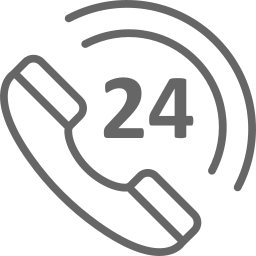The Framework for diversity and intersectionality in Family Violence of the Victorian Government describes intersectionality as "multiple facets of a person's identity that can expose [the person] to concurrent types of oppression and marginalization." Gender, class, ethnicity, and cultural background, faith, disability, and sexual orientation can be included in such factors (Barrios et al., 2020). Intersectionality is the connectivity between a person or a community of race, class, and gender. It is also linked to a negative background for a disadvantage. The intersectional factors only bring inequality and discrimination amongst people. Women's risk in different communities is amplified by interconnecting cultural and organizational limitations introducing extra barriers to participation and disclosure of services.
Gender disparity makes women at higher risk of witnessing abuse within the family. Aboriginal women are more susceptible to domestic violence and require injury hospitalization than non - indigenous women, which can be described by the intersection of race and prejudice and unfairness based on sex (Spencer, Cafferky & Stith, 2016). Elderly adults who have newly come to Australia from CALD backgrounds may encounter social exclusion because they often weaken the support systems during the migration process. Many may also have trouble obtaining facilities, including having communication barriers, or may have fear about contacting a conventional service. Rejecting people based on their orientation or gender, and threats of 'out siding' someone, could be utilized as a means of repression and violence among certain CALD cultures (Adebayo, Durey & Slack?Smith, 2017).
Family violence is a common problem amongst Aboriginal people and the Torres Strait Islanders community and this occur within the families. Aboriginal prefer the word 'family violence' as it covers the wide spectrum of kin and marital relationships that may include abuse (NSW Department of Health, 2011). Family violence in the indigenous population can be viewed as violence in the broader community amongst members of their family network including grandparents, uncles, aunts, relatives, whereas the non-Indigenous peoples view family violence as merely what happens within the nuclear family. It applies to 'one-on-one hardship, bullying of aboriginal members and injury, self-harm, and suicide. Many Aboriginal people who are victims of family violence had to conceal and/or reject their feelings of pain and desperation to survive over the years. Throughout the family, this trauma has become internalized, revealing itself in harmful actions such as exploitation of family violence, alcohol and drugs, and suicide (Velardi, 2018).
Australia's colonization had a profound effect on the indigenous population that have lived for centuries on this continent. In the next 10 years, it is projected that Australia's indigenous population has been decreased by 90%. The arrival of new diseases, settlers acquiring Indigenous lands, and significant and abusive dispute with colonizers were three major reasons for such a significant population decrease (Jackson, Porter & Johnson, 2017). The other most obvious impact of colonization was a surge of communicable disease, including measles, smallpox, and influenza, spreading across the border and destroying many indigenous people. Indigenous girls and women's sexual harassment and violence have brought severe levels of sexual disease to the indigenous population (Samson & Gigoux, 2016).It is recorded that about 20,000 Indigenous persons were murdered because of the possible consequence of colonial aggression throughout this period of Australian history. Around 2,000- 2,500 settler casualties occurred from territorial violence throughout the given period. The historical reports also record several instances on which Aboriginal populations were targeted and violently murdered. Indigenous massacres have also taken the shape of random killings or throwing groups of people down cliffs. Those are also multiple mentions of the colonists who sell food poisoned with poison and other contaminants to aboriginal people (Oldstone, 2020).Colonization has caused prejudice, inequity, and destruction of the traditions of the Indigenous and Torres Strait Islanders. Nonetheless, the impact of colonialism on Indigenous and Torres Strait Islander today has been the most negative of health determinants that continues to have a significant influence on the health effects. The physical, mental, and psychological damages perpetrated on Australia's first inhabitants tend to affect the Aboriginal and Torres Strait Islanders' existing medical status. The brutality and aggression that encompassed all these years has been at the core of today 's ongoing traumatic experiences (Griffiths et al., 2016).
Family abuse has been a matter of grave concern for Aboriginal people, for several years in Victoria, the families, and societies. The Victorian Indigenous Family Violence Task Force Report reported in 2003 that it is generally accepted and recognized that domestic abuse disproportionately affects Aboriginal women, families, and communities' social, cultural, physical, mental, and economic well-being. It culminated in a group driven alliance between Victoria 's Indigenous government and communities working together to tackle family abuse. Dedication to the development of an Indigenous Contextual System for domestic violence Reduction that is related to the larger preventive framework established by the Victorian Health Promotion Foundation (State Government Victoria, 2008).
Regional Action on aboriginal domestic violence has a great role in developing and implementation of community-led reactions that enlighten, inhibit, decrease, and react appropriately to indigenous domestic violence. The IFVRAGs is an inclusive platform for the Victorian indigenous community to establish local solutions to domestic problems, maintaining these issues are sensitive and contextually sensitive to Aboriginal people, communities and societies. IFVRAGs have developed regional action processes to achieve and prioritize community - based initiatives or methods in indigenous communities for the prevention and addressing of domestic violence. In 2010 each region received additional funding from the Neighbourhood Health Initiatives Fund for primary prevention programs. The initiatives are expected to promote and resolve the goals of domestic abuse reduction as defined by the Regional Action Groups on Indigenous Family Violence. People are also intended to promote alliances for violence prevention within surrounding people, and to enhancing the role of Aboriginal groups and institutions to resolve domestic abuse at the community level (State Government Victoria, 2008).
The principles are intended to provide a shared understanding of family violence to professionals and services, and to facilitate effective, consistent, and responses that are safe for those experiencing family violence (Victoria Government, 2020). The basics are:
The MARAM was created in law underneath a newer version 11 of the 2008 Family Violence Protection Act. Although not all applicable entities are yet included with the MARAM legislation, any agency that offers supported programs relating to the assessment of risk and management of family violence will begin to coordinate their strategies, practices, practice guidelines, and resources with MARAM (Victoria Government, 2020). Both professionals and services in approved structure organizations, as well as any professionals or services trying to improve their approach to risk assessment and management of family violence, should use the MARAM Practice Guides. Responsibilities 1–2, 5–6 and 9–10 extend to defined Framework organizations to all applicable personnel and facilities. All organizational leaders of defined Framework organizations need to recognize the responsibilities and roles of their organization's professionals and services. Recognizing and charting these positions inside and around the organization will promote the shared importance of professional and service duties and responsibilities around the service delivery system. This will help professionals and services comprehend that they can work together to improve, evaluate, and manage the risk of family violence by exchanging information, supplementary evaluation and referral.
Ensure that staff can conduct a professional and secure intermediate risk analysis of adult and child victim rescuers utilizing centralized skilled decisions and resources needed, such as the assets for short-lived and transitional evaluation. During which pertinent to, and acceptable to, the organization or provider's structure and quest, ensure that all employees can make a contribution efficiently and productively to psychosocial assessment through communication with a victim, such as using the evaluation of abuser behavior, and make a contribution to keeping the others in view and accountable for everyone's actions and behavior. Ensure that staff regularly resolve urgent risks and safety issues related to survivors of adults and child victims, and conduct intermediate-risk management, including safety preparation. Many that deal closely with the offenders seek to handle the intermediate danger when it is safe to do so, like safety preparation (Victoria Government, 2020).
Ensure that workers in specialist family violence positions are qualified to identify adequately the threats, requirements, and protective factors for perpetrators of abuse of adults and children. Ensure that staff who are experienced in dealing with offenders are skilled and prepared to conduct a thorough danger and needs a process to evaluate the severity of the perpetrator's danger, customize the intervention and treatment solutions, and relate to holding them in mind and responsible for their acts and behaviors. It requires an awareness of their positions and duties within the larger framework so that initiatives can be consistently reinforced over a period. Ensure that all employees are qualified to carry out effective risk management through production, monitoring, and implementation of safety plans (including ongoing risk assessment), in collaboration with the victim and adult or child victim service agencies. Ensure that all staff who are specialists in working with the offenders are prepared in the implementation, tracking, and intervention of risk management strategies. The procedure involves sharing of information, supervising around the service delivery system, and holding offenders accountable and responsible. It can be through organized and informal system accountability mechanisms that foster a victim's responsibility, take responsibility for their behavior, and cooperate on the behavior change continuum (Victoria Government, 2020).
The Commission discovered that there was no efficient exchange of essential information between organizations. Failure to exchange vital details with frontline staff can have devastating implications for domestic violence claimants. As a consequence, Part 5A of the Family Violence Protection Act, 2008, created the Family Violence Information Sharing Scheme (Scheme). The Scheme promotes proactive risk assessment and prevention of domestic abuse. Under Scheme, information exchange entities may or may exchange information about evaluating or managing the risk of family violence. The Scheme assists ISEs in holding offenders in mind and responsible, and in supporting the health of survivors of family abuse victims. The Program does not conflict with current laws for the exchange of information, such as regulations on confidentiality or child welfare (Victoria Government, 2020).
Adebayo, B., Durey, A., & Slack?Smith, L. M. (2017). Culturally and linguistically diverse (CALD) carers' perceptions of oral care in residential aged care settings in Perth, Western Australia. Gerodontology, 34(1), 33-41.
Barrios, V. R., Khaw, L. B. L., Bermea, A., & Hardesty, J. L. (2020). Future directions in intimate partner violence research: An intersectionality framework for analyzing women’s processes of leaving abusive relationships. Journal of Interpersonal Violence, 0886260519900939.
Griffiths, K., Coleman, C., Lee, V., & Madden, R. (2016). How colonisation determines social justice and Indigenous health—S review of the literature. Journal of Population Research, 33(1), 9-30.
Jackson, S., Porter, L., & Johnson, L. C. (2017). Planning in Indigenous Australia: From imperial foundations to postcolonial futures. Routledge.
Oldstone, M. B. (2020). Viruses, plagues, and history: Past, present, and future. Oxford University Press.
Samson, C., & Gigoux, C. (2016). Indigenous peoples and colonialism: Global perspectives. John Wiley & Sons.
Spencer, C., Cafferky, B., & Stith, S. M. (2016). Gender differences in risk markers for perpetration of physical partner violence: Results from a meta-analytic review. Journal of Family Violence, 31(8), 981-984.
State government Victoria. (2008). Indigenous Family Violence Primary Prevention Framework. Retrieved from http://www.nwhn.net.au/admin/file/content101/c6/IFV_Revised_Final.pdf
Velardi, A. (2018). Reporting on Aboriginal social problems: The impact the 2006'Lateline'broadcasts had on the Australian media, parliamentarians, and Northern Territory Government. Journal of Australian Indigenous Issues, 21(3), 60.
Victoria Government (2020). Data collection standards - Family violence data items. Retrieved from https://www.vic.gov.au/victorian-family-violence-data-collection-framework/data-collection-standards-family-violence-data
Victoria Government (2020). Family Violence Information Sharing Scheme. Retrieved from https://www.vic.gov.au/family-violence-information-sharing-scheme
Victoria Government. (2020). The MARAM Framework. Retrieved fromhttps://www.vic.gov.au/report-on-implementation-of-the-family-violence-risk-assessment-and-management-framework-2018-19-victorian-government/maram-framework
Remember, at the center of any academic work, lies clarity and evidence. Should you need further assistance, do look up to our Sociology Assignment Help
Top Pick
Top-notch Migration Law Assignment Help

Get 24x7 instant assistance whenever you need.

Get affordable prices for your every assignment.

Assure you to deliver the assignment before the deadline

Get Plagiarism and AI content free Assignment

Get direct communication with experts immediately.
Get
500 Words Free
on your assignment today

It's Time To Find The Right Expert to Prepare Your Assignment!
Do not let assignment submission deadlines stress you out. Explore our professional assignment writing services with competitive rates today!
Secure Your Assignment!